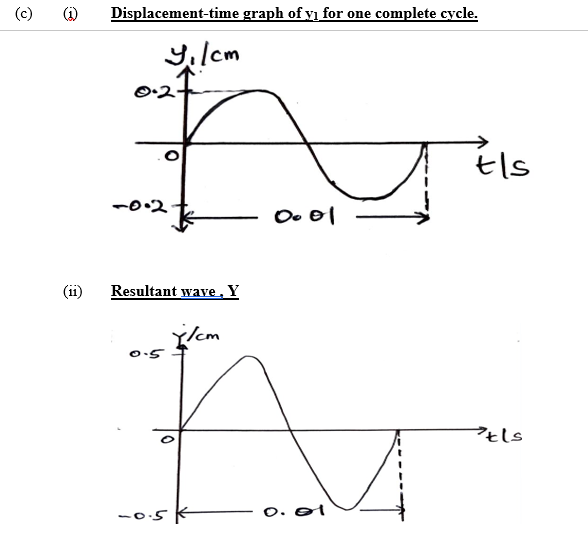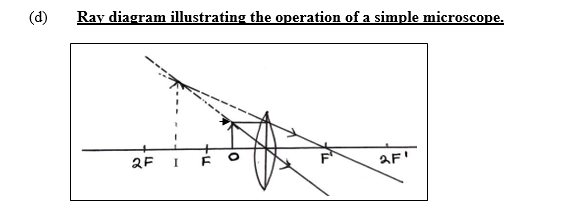Question 10
(a) State two conditions necessary for diffraction of waves to occur.
(b) Explain each of the following terms as used in connection with waves
(i) wavefront;
(ii) wavelength;
(iii) antinode.
(c) Two plane progressive waves, y1 = 0.2 sin (200) and y2 = 0.3 sin (200) sin where y and x are both in cm and t in s, undergo superposition. Sketch the
(i) displacement-time graph graph of y1for one complete cycle;
(ii) resultant wave, Y, for the superposition of y1 andy2.
(d) Draw a ray diagram illustrating the operation of a simple microscope.
Observation
The expected response:
(a) Conditions necessary for diffraction of waves to occur
- Waves must encounter an obstacle/aperture
- Aperture size must be of the order of the wavelength
- Source of wave must be monochromatic
- Wave must be progressive/travelling.
- (b) Explanation of terms
- (i) Wavefront : Imaginary section/plane/line through the wave, the surface of which the particles vibrate in phase .
(ii) Wavelength: The distance covered/travelled by the wave in one complete cycle.
OR
The distance between szccessive crest or troughs
It is measured in metres.
(iii) Antinode: The point along a stationary waveprofile where the displacement of the particle is at its maximum.


